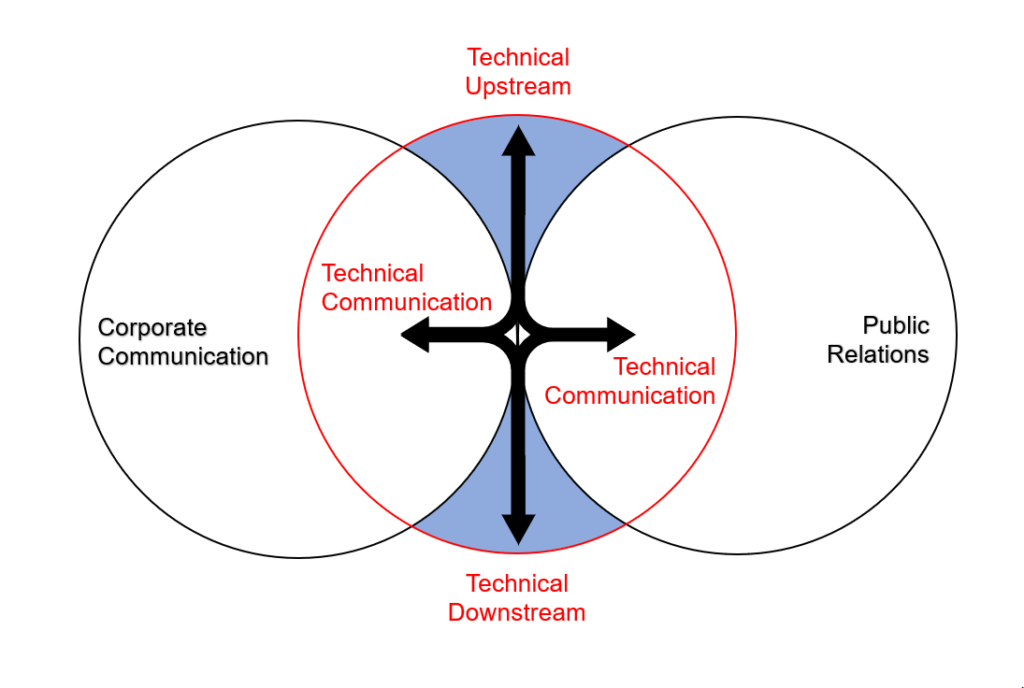Between Corp Comm and PR: Tech Comm as Central

This model centralises Tech Comm. This model is designed to describe communications practices in companies that are highly technical, so is less descriptive of communications practice in companies whose product is not technical. As in the PTC model described earlier, Tech Comm resides between Corp Comm and PR.
When PR has communications of a technical nature to issue to an external stakeholder group, the PR section collaborates with Tech Comm for quality control. Likewise, when Corp Comm has communications of a technical nature to issue to an internal stakeholder group, Corp Comm collaborates with Tech Comm.
In this model, collaboration is more normal than in the other models, hence the much larger oval areas of intersection. Also, because Corp Comm and PR touch inside the Tech Comm sphere, Tech Comm can now assume a new or more formal role, i.e. that of accuracy checking (what I term “informational hygiene assurance”). Communications from either side can pass through Tech Comm for quality control purposes, if necessary. This ensures technical accuracy in communications. This model assumes that communicators inside the Tech Comm sphere have more technical knowledge than their colleagues in Corp Comm and PR. Hence, the accuracy of important communications can be improved through this process. However, in this model, internal gatekeeping by Tech Comm is an option, not a fundamental.
As in others, in this model, Corp Comm and PR take care of their internal and external stakeholder communications respectively. When either have need of technical information, Tech Comm supplies and collaboration occurs, often. The large areas of intersection reflect the frequency of this need. The applicability of this model grows, of course, in proportion to the technical nature of the company’s products or services.
The blue areas inside the Tech Comm sphere (outside the other two spheres) represent third-party stakeholders with technical information requirements. At the top, “Technical Upstream” refers to industrial partners involved in production, packaging, inbound logistics provision, or any other upstream activity. Their need for technical information is obvious. Their need for direct communication with either PR or Corp Comm is slight to the point of trivial.
At the bottom, “Technical Downstream” refers to industrial partners involved in retail, wholesale, promotion, outbound logistics provision, or any other downstream activity. Their technical information requirements – although not as exacting at those of upstream partners – are also understandable.
Importantly, during the stages of product development, manufacturing, distribution and retail, technical information concerning product can be exchanged between the company and its third-party partners, hence the enclosure of the two blue areas inside the Tech Comm sphere. Thus, third-party companies are communicated with on a bidirectional basis. Information incoming from third-parties that is of relevance to management and/or users passes through Tech Comm to the Corp Comm and PR spheres, accordingly. In this way, Tech Comm acts as an internal gatekeeper, filtering and translating important information received from both the upstream and downstream entities operating in the company’s supply chain. The information thereby passed on is easily understood by communicators in the spheres either side of Tech Comm.
